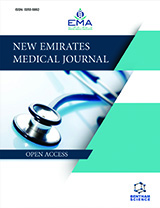Abstract
Background: Identifying the preferred learning modalities of students is crucial for a comprehensive understanding of the content of the study, and this can be achieved by employing the VARK inventory developed by Neil D. Fleming. The preferred learning modality of students significantly influences their learning outcomes.
Aim: This study aimed to identify the preferred learning modalities among health professional students.
Methods: Using a cross-sectional survey study design, we surveyed a consecutive sample of 351 students from three health professional programs: Nursing, Medical, and Pharmacy. After obtaining institutional board approval, a standardized self-administered VARK inventory (Visual, Aural, Read/write, Kinaesthetic), version 7.8, was employed. VARK scores were computed for each respondent and sent to the publisher for interpretation and categorization of learning preferences. Data were analyzed using SPSS version 28.0 and 29.0.
Results: The findings revealed that 35.9% of participants were between 18-20 years old and identified as unimodal learners, with 19.09% preferring kinaesthetic learning. In the bimodal and trimodal categories, 5.98% exhibited preferences for AK (Aural, Kinaesthetic) and VAK (Visual, Aural, and Kinaesthetic). Only seventy students (19.9%) preferred multimodal learning patterns. Notably, all the college students were identified as unimodal learners.
Conclusion: Understanding these diverse learning preferences empowers students to employ appropriate learning methods, enhancing their overall learning experience. Faculty members can leverage this data to tailor teaching styles, thereby optimizing the learning environment. Further research across different universities can contribute to broader knowledge and informed strategies that promote effective learning processes.
New Emirates Medical Journal
Title:Learning Preference of Health Care Professional Students at a Multi-cultural University in the United Arab Emirates
Volume: 5
Author(s): Sheeba M. David*, Rose E. Ilesanmi, Victoria F. Hanson and Vimala Edwin
Affiliation:
- School of Nursing Michael J. Grant Campus, Suffolk County Community College, New York, USA
Abstract:
Background: Identifying the preferred learning modalities of students is crucial for a comprehensive understanding of the content of the study, and this can be achieved by employing the VARK inventory developed by Neil D. Fleming. The preferred learning modality of students significantly influences their learning outcomes.
Aim: This study aimed to identify the preferred learning modalities among health professional students.
Methods: Using a cross-sectional survey study design, we surveyed a consecutive sample of 351 students from three health professional programs: Nursing, Medical, and Pharmacy. After obtaining institutional board approval, a standardized self-administered VARK inventory (Visual, Aural, Read/write, Kinaesthetic), version 7.8, was employed. VARK scores were computed for each respondent and sent to the publisher for interpretation and categorization of learning preferences. Data were analyzed using SPSS version 28.0 and 29.0.
Results: The findings revealed that 35.9% of participants were between 18-20 years old and identified as unimodal learners, with 19.09% preferring kinaesthetic learning. In the bimodal and trimodal categories, 5.98% exhibited preferences for AK (Aural, Kinaesthetic) and VAK (Visual, Aural, and Kinaesthetic). Only seventy students (19.9%) preferred multimodal learning patterns. Notably, all the college students were identified as unimodal learners.
Conclusion: Understanding these diverse learning preferences empowers students to employ appropriate learning methods, enhancing their overall learning experience. Faculty members can leverage this data to tailor teaching styles, thereby optimizing the learning environment. Further research across different universities can contribute to broader knowledge and informed strategies that promote effective learning processes.
Export Options
About this article
Cite this article as:
David M. Sheeba*, Ilesanmi E. Rose, Hanson F. Victoria and Edwin Vimala, Learning Preference of Health Care Professional Students at a Multi-cultural University in the United Arab Emirates, New Emirates Medical Journal 2024; 5 : e02506882298077 . https://dx.doi.org/10.2174/0102506882298077240603111704
| DOI https://dx.doi.org/10.2174/0102506882298077240603111704 |
Print ISSN 0250-6882 |
| Publisher Name Bentham Science Publisher |
Online ISSN 0250-6882 |

- Author Guidelines
- Bentham Author Support Services (BASS)
- Graphical Abstracts
- Fabricating and Stating False Information
- Research Misconduct
- Post Publication Discussions and Corrections
- Publishing Ethics and Rectitude
- Increase Visibility of Your Article
- Archiving Policies
- Peer Review Workflow
- Order Your Article Before Print
- Promote Your Article
- Manuscript Transfer Facility
- Editorial Policies
- Allegations from Whistleblowers




























